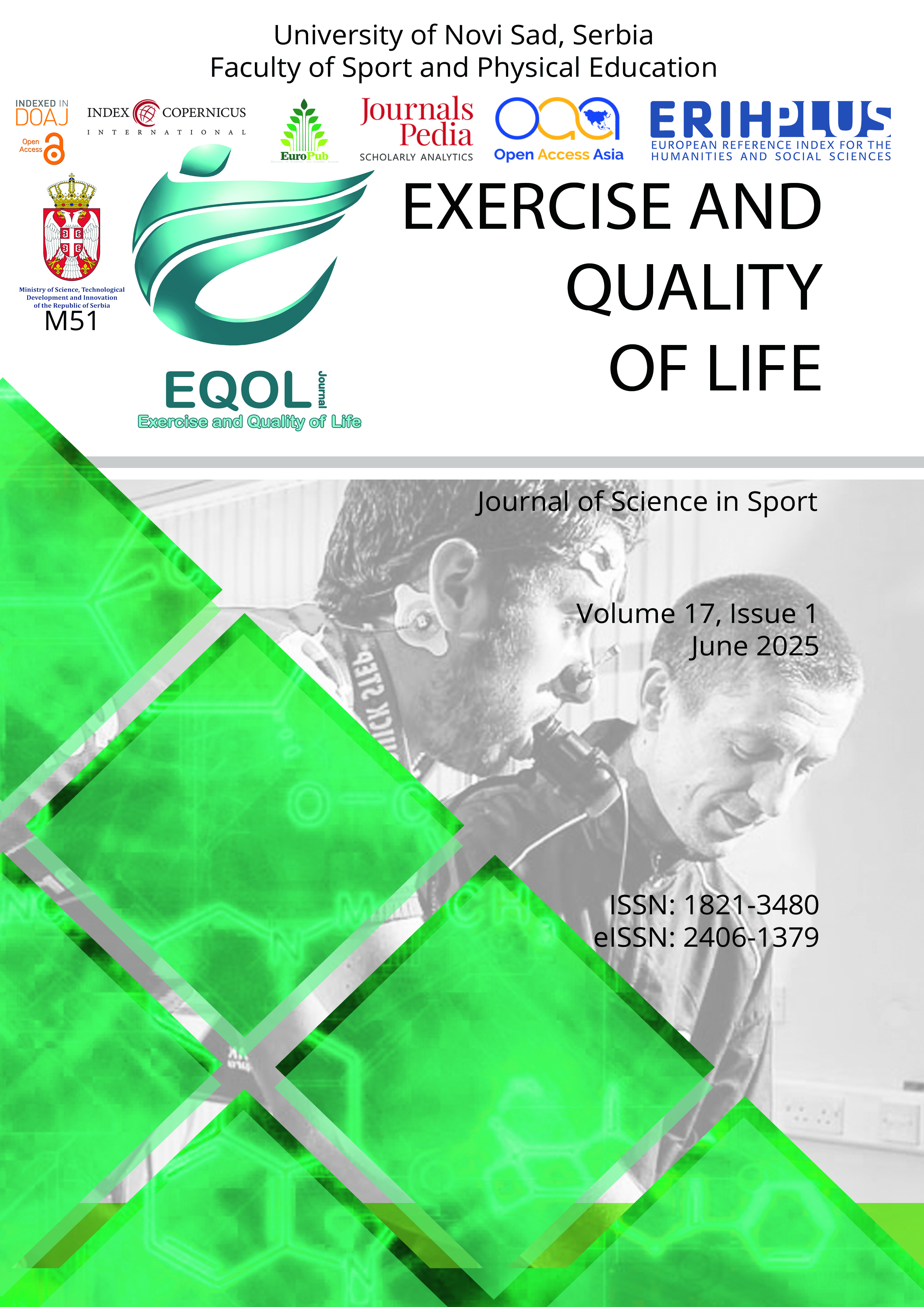Current issue

Volume 17, Issue 1, 2025
Online ISSN: 2406-1379
ISSN: 1821-3480
Volume 17 , Issue 1, (2025)
Published: 15.06.2025.
Open Access
All issues
Contents
13.12.2023.
Original scientific paper
Increased legs-to-total fat percentage ratio in females with a normal body mass index: A change in lifestyle or the adaptation process of the body
Monitoring the prevalence of obesity is of great importance for assessing lifestyle interventions aimed at preventing or reducing the health and economic burden of obesity. A sedentary Westerntype lifestyle results in an increase in the incidence of normal-weight (e.g., thin fat) obesity. In the present cross-sectional study, the regional body composition status (using a multifrequency, medically approved electrical bioimpedance monitor) of 844 Slovene adults was examined. The primary aim was to compare the leg fat percentage to total body fat percentage (LEGFAT%-toTOTFAT%) and to trunk fat percentage (TRUFAT%) (LEGFAT%-to-TRUFAT%) ratios of participants in the normal and obese body mass index (BMI) and categories according to the BMI and obesity classifications of the World Health Organization. In addition, examined how correlated with, sex, and age, according to obesity classification cut-offs. Results showed, for the whole sample, that increases by an average of 0.13% each year (ceteris paribus). However, females in the normal BMI and TOTFAT% categories, but not males, had significantly higher LEGFAT%-to-TOTFAT% and LEGFAT%-to-TRUFAT% ratios than those in the obese category. Furthermore, adjusted R2 (linear regression) showed that 82.5% of the variation in LEGFAT% was explained by variations in TOTFAT%, sex, and age. The present results indicated the increasing importance of studying the regional body composition status, especially of TRUFAT% and LEGFAT% compared with TOTFAT% (beyond the known sex differences). The clinical relevance of the increasing disproportionality in the regional body composition status of females with normal BMI and TOTFAT% needs to be further clarified.
Boštjan Jakše, Stanislav Pinter, Uroš Godnov
14.06.2022.
Original scientific paper
Menstrual status and perceived coaching strategy and training methodology in high-performance female swimmers from Slovenia - Preliminary study
Female swimmers participate in intensive swimming training during their menstrual periods, and they may appreciate additional understanding and flexibility regarding their training volume/intensity. Male coaches often view menstruation contemptuously as an unfortunate state that “is not a disease,” and high-performance female swimmers perceive coaching methods differently. Our study aimed to examine menstrual status and perceived coaching and training methodology. In a cross-sectional study, members of the Slovenian women’s national swim team (n = 14, age: 16.6 ± 3.1 years, body mass index: 20.1 ± 1.9 kg/m2) competing at international and national levels were included. The menstrual status (i.e., regularity, duration, perceived pain before and during menstruation, bleeding) and the opinion of these female swimmers regarding training during their menstrual periods were assessed via our in-depth questionnaire, and the athletes responded to additional questions pertaining to the motivation of swimming, coaching strategy and training methods via a questionnaire. All swimmers included in our study had experienced their first menstrual period, and the majority (85%) reported moderate or heavy menstrual bleeding. Most swimmers (93%) reported that their swimming training was “undisturbed” during their menstrual period; however, 64% of swimmers requested a reduction in training frequency or at least the usual training volume/intensity. In terms of the motivation for swimming, 74% of swimmers reported that they like swimming and like spending time with their friends. In terms of coaching and training methods, the swimmers reported polarized responses, probably because most of them are members of two major swimming clubs with different coaching styles. To conclude, when executed correctly, a similar kind of systematic screening method (i.e., anonymously and perhaps by experienced psychologists) may serve as a valuable tool to further modify training methods at a high-performance level. Moreover, unpleasant issues related to menstrual periods from the athlete’s perspective (i.e., pain, bleeding, malaise, discomfort, inability to achieve maximum effort) should not be ignored, left for swimmers to handle alone, or taken for granted. Male coaches need to seek to understand the impact of menstruation and work with athletes to maximize training.
Boštjan Jakše, Dorica Šajber























